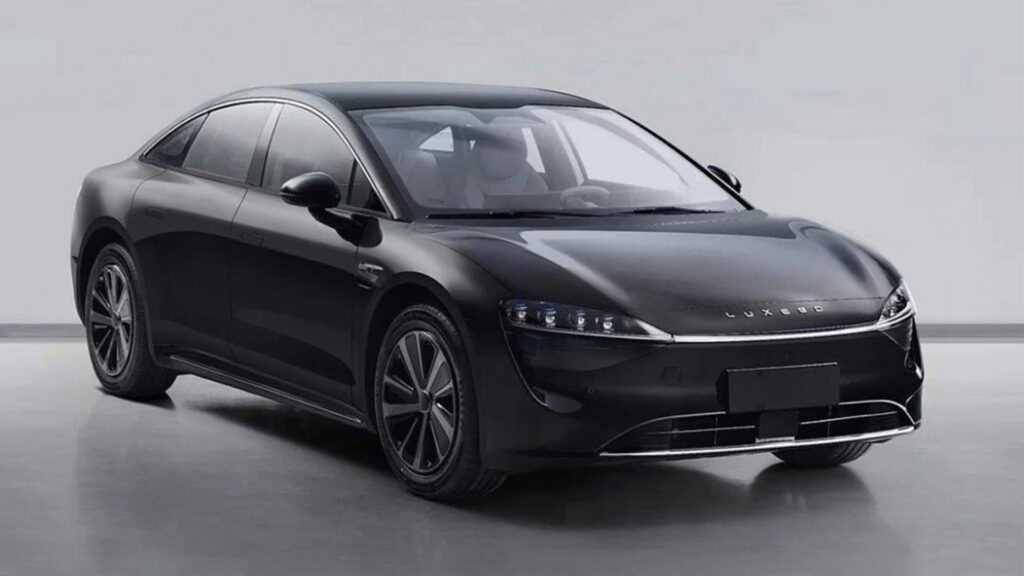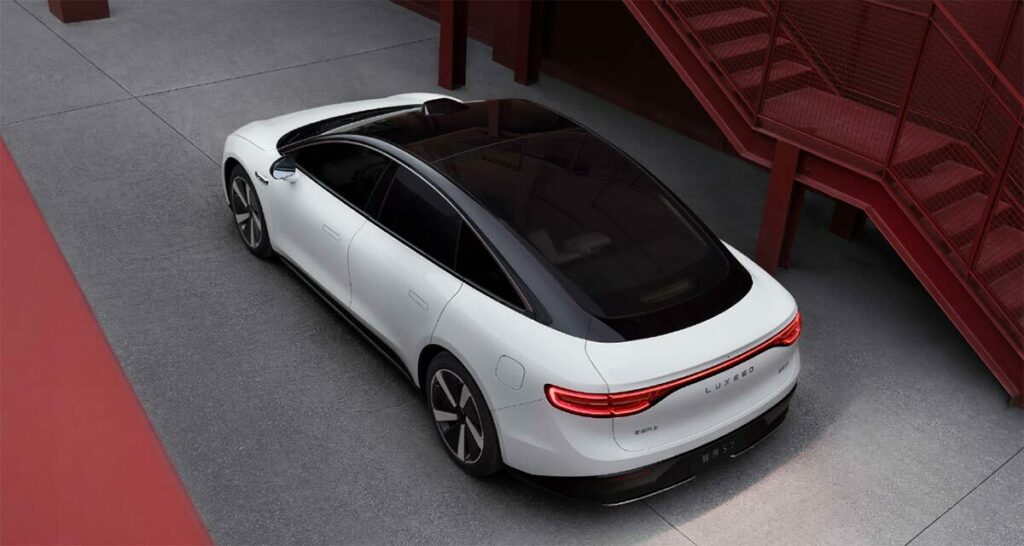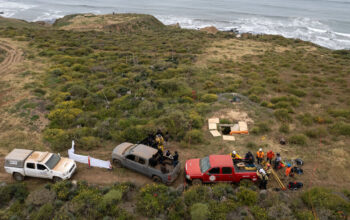The Luxeed S7 from Huawei and Chery Automobile will debut in November featuring a dual-motor electric powertrain
5 hours ago
 –>
–> 
–>
Luxeed, the car manufacturer formed by Chery Automobile and Huawei, is set to unveil its rival to the Tesla Model S in November and it has a lot of confidence in its first production model, dubbed the S7.
Underpinning the Luxeed S7 will be the Chery E0X platform and it is expected to be sold with a pair of electric motors. The head of Huawei’s car unit, Richard Yu Chengdong, has not yet confirmed how much the S7 will cost, nor precisely what features it will have, but has made no secrets about what car it hopes to dethrone.
“The car will make its debut in late November,” he said. “It will be superior to Tesla’s Model S in various aspects.”
advertisement scroll to continue
Read: Seres Brings Its 5 and 7 SUVs To Munich Auto Show Ahead Of European Launch

While sales of Chinese-made EVs continue to rise, competition is also growing with a raft of new manufacturers entering the market. According to Shanghai-based analyst Gao Shen, the Luxeed brand has had high expectations placed on it.
“Chery is an automotive powerhouse and Huawei’s strongest partner in developing smart cars so far,” Gao said. “High hopes have been pinned on Luxeed because of the marriage between Huawei’s technological clout and Chery’s manufacturing heft.”
Luxeed also forms an important part of Huawei’s ongoing expansion into the automotive sphere. It is already selling vehicles through the Aito brand formed with Seres and is also supplying car manufacturers including Arcfox and Avatar Technology with LiDAR sensors, chips, and more, South China Morning Post reports.
The Luxeed S7 is set to debut with Huawei’s new HarmonyOS 4 software and will come standard with a plethora of connectivity features. Given that it will use Chery’s E0X architecture, it is expected to have a battery pack sourced from CATL providing it with a range of up to 435 miles (700 km). Carscoops also understands that it will include the latest Huawei ADS 2.0 intelligent driving system with a roof-mounted LiDAR, 12 ultrasonic sensors, 11 high-definition cameras, and 3 millimeter-wave radars.
 –>
–> 